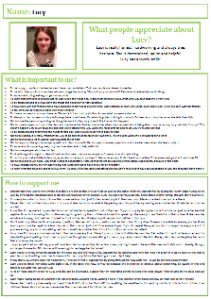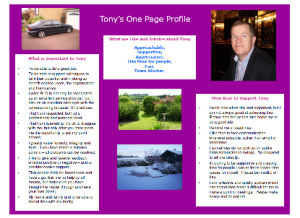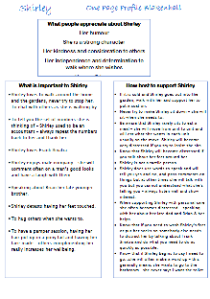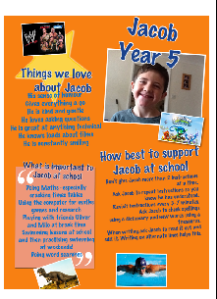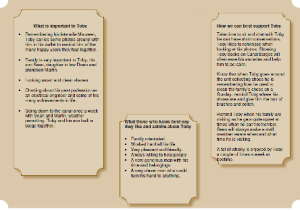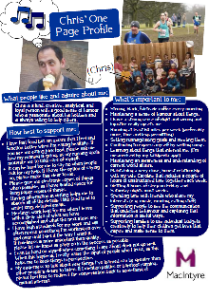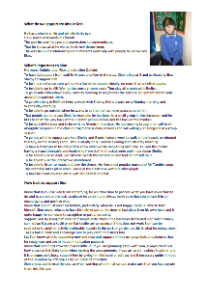An example of how using a one-page profile from an early age has helped Lucy express what she needs and positively influence the support she receives. Lucy’s one-page profile has followed her through school from the age of eight and at age thirteen, it’s hard to imagine how things would have turned out without it.
Written by Gill Goodwin of HSA
Lucy was placed for adoption aged two after moving to foster care just before her first birthday due to extreme neglect. Now thirteen, Lucy has settled well however the legacy of her difficult start means she can become very anxious, has some difficulties with learning and some sensory problems. Lucy has a statement of educational need and receives full time support in her local mainstream school.
Since being eight years old Lucy has had a one-page profile. At the time she was experiencing symptoms of anxiety and we had hoped that a profile would enable her to be happier and more relaxed in school and optimise her relationships and learning.I visited Lucy and her Mum at home and we talked about what made a good day for Lucy and the kind of things Lucy felt would make a difference for her. I then spent some time with her class teacher and teaching assistant in school. Putting together the profile with Lucy’s mum meant that we were able to double check that it fully reflected Lucy from her perspective and covered all the important information that people needed to know to support her well.
Almost immediately after introducing Lucy’s first one-page profile her level of anxiety reduced and in turn some of her repetitive behaviours such as adjusting her clothes and pulling up her socks. It also had a positive effect on her skills such as reading aloud and her motivation to try activities in school.
Each year we update her profile in preparation for the school year ahead. Now that Lucy is in secondary school her Special Needs Coordinator goes through the one-page profile with her Teachers and Teaching Assistants at a meeting before the year starts. She ensures all staff have a copy and that the TAs in particular know the best ways to support Lucy and enable her to have good days. Little things like teachers smiling at her specifically when she enters the room make her feel more relaxed. Lucy’s one-page profile means that staff are aware of the things that can make Lucy upset and ensure that situations do not escalate and that she is supported to stay calm.
As she has matured Lucy has been able to identify the kind of support she knows will help her and is confident to tell her learning coach and SENCo. For example at her annual review she was able to say why she found the support from one TA less helpful and could explain that she needed her to give information one step at a time and not give the next instruction while she was writing or thinking. Having the one-page profile, and it so clearly belonging to her, has meant Lucy seems to understand that it is her responsibility to let people know how to support her in the best way. She also knows the way to phrase things and is therefore becoming empowered to influence positively the support she is given.
School staff in her new school have quickly got to know Lucy and what makes her tick and these close supportive relationships have been pivotal in her successful inclusion into a large mainstream comprehensive school.
Lucy has had a one-page profile for so long now that it is difficult to know how things would have been without one! Lucy is happy, settled and has all the opportunities at school and at home open to her, which is what she and her family had wished for.

